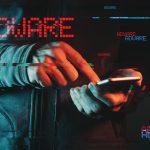The Wannachaos666 ransomware, more commonly known as Chaos, is a highly destructive malware strain that surged in activity in mid‑2025. Evolved from earlier ransomware builders and wiper tools first seen in 2021, Chaos represents a new level of threat combining traditional encryption with irreversible data corruption.
Threat Overview
| Feature | Details |
|---|---|
| Threat type | Ransomware (encryption + corruption) |
| Encrypted file extension | .chaos |
| Ransom note file name | readme.chaos.txt |
| Detection names | Chaos, Ryuk-like, Trojan.Ransom.Chaos |
| Symptoms of infection | Files renamed with .chaos; ransom note appears; partial file corruption |
| Damage / distribution | Files under 2 MB fully encrypted; larger ones corrupted; spread through phishing emails, exploit kits, and compromised remote-access tools |
| Danger level | Critical – targets high-profile businesses; includes threats of data leaks and DDoS attacks |
| Removal Tool | SpyHunter |
Threat Evaluation & Impact
How I Got Infected
Infection typically occurs via malicious email attachments, links from phishing campaigns, or through exploitation of system vulnerabilities. In some cases, attackers trick users into installing remote-access tools like Windows Quick Assist to gain direct control.
What It Does
Chaos ransomware encrypts smaller files and corrupts larger ones:
- Files under 2 MB are fully encrypted with AES/RSA algorithms.
- Larger files are partially overwritten, making them unrecoverable.
- Victims find a ransom note named
readme.chaos.txtdemanding payment and threatening additional consequences such as data leaks or DDoS attacks.
Should You Be Worried for Your System?
Yes. Chaos has been involved in high-impact attacks across logistics, insurance, and technology sectors. Its hybrid of ransomware and wiper behavior results in permanent file loss even after paying the ransom. Combined with its double-extortion tactics and infrastructure disruption threats, Chaos is considered a critical cybersecurity risk.
Ransom Note Text (Example)
To retrieve your files, contact us at the following email or dark‑web address
You have 72 hours before your data is leaked or destroyed
If you refuse to pay, we will publish sensitive data or perform DDoS on your infrastructure
Detailed Analysis
- Origin: Chaos began as a ransomware builder tool and evolved into a fully functional ransomware with destructive capabilities.
- Operation: Encrypts and corrupts files, then demands ransom through intimidating ransom notes. Also uses data extortion and DDoS threats to pressure victims.
- Victims: Often large enterprises targeted through spear-phishing or unpatched remote access services.
- Behavior: Its dual strategy of damage—encryption and file corruption—reduces recovery chances, even with decryption keys. The group behind Chaos has also been known to share victim data online if ransoms aren’t paid.
Manual Ransomware Removal Guide
Warning: Manual removal is complex and risky. If not done correctly, it can lead to data loss or incomplete removal of ransomware. Only follow this method if you are an advanced user. If unsure, proceed with Method 2 (SpyHunter Removal Guide).
Step 1: Disconnect from the Internet
- Unplug your Ethernet cable or disconnect Wi-Fi immediately to prevent further communication with the ransomware’s command and control (C2) servers.
Step 2: Boot into Safe Mode
For Windows Users:
- For Windows 10, 11:
- Press Windows + R, type
msconfig, and hit Enter. - Go to the Boot tab.
- Check Safe boot and select Network.
- Click Apply and OK, then restart your PC.
- Press Windows + R, type
- For Windows 7, 8:
- Restart your PC and press F8 repeatedly before Windows loads.
- Select Safe Mode with Networking and press Enter.
For Mac Users:
- Restart your Mac and immediately press and hold the Shift key.
- Release the key once you see the Apple logo.
- Your Mac will start in Safe Mode.
Step 3: Locate and Terminate Malicious Processes
For Windows Users:
- Press Ctrl + Shift + Esc to open Task Manager.
- Look for suspicious processes (e.g., unknown names, high CPU usage, or random letters).
- Right-click on the process and select End Task.
For Mac Users:
- Open Activity Monitor (Finder > Applications > Utilities > Activity Monitor).
- Look for unusual processes.
- Select the process and click Force Quit.
Step 4: Delete Malicious Files
For Windows Users:
- Press Windows + R, type
%temp%, and hit Enter. - Delete all files in the Temp folder.
- Navigate to:
C:\Users\[Your Username]\AppData\RoamingC:\Users\[Your Username]\AppData\LocalC:\Windows\System32
- Look for suspicious files related to the ransomware (random file names, recently modified) and delete them.
For Mac Users:
- Open Finder and go to Go > Go to Folder.
- Type
~/Library/Application Supportand delete suspicious folders. - Navigate to
~/Library/LaunchAgentsand remove unknown.plistfiles.
Step 5: Remove Ransomware from Registry or System Settings
For Windows Users:
Warning: Incorrect changes in the Registry Editor can damage your system. Proceed with caution.
- Press Windows + R, type
regedit, and hit Enter. - Navigate to:
HKEY_CURRENT_USER\SoftwareHKEY_LOCAL_MACHINE\Software
- Look for unfamiliar folders with random characters or ransomware-related names.
- Right-click and select Delete.
For Mac Users:
- Go to System Preferences > Users & Groups.
- Click on Login Items and remove any suspicious startup items.
- Navigate to
~/Library/Preferencesand remove malicious.plistfiles.
Step 6: Restore System Using System Restore (Windows) or Time Machine (Mac)
For Windows Users:
- Press Windows + R, type
rstrui, and hit Enter. - Click Next, choose a restore point before the infection, and follow the prompts to restore your system.
For Mac Users:
- Restart your Mac and hold Command + R to enter macOS Utilities.
- Select Restore from Time Machine Backup.
- Choose a backup prior to the ransomware infection and restore your system.
Step 7: Use a Decryption Tool (If Available)
- Visit No More Ransom (www.nomoreransom.org) and check if a decryption tool is available for your ransomware variant.
Step 8: Recover Files Using Backup
- If you have backups on an external drive or cloud storage, restore your files.
Automatic Ransomware Removal Using SpyHunter
If manual removal seems too risky or complicated, using a reliable anti-malware tool like SpyHunter is the best alternative.
Step 1: Download SpyHunter
Download SpyHunter from the official link: Download SpyHunter
Or follow the official installation instructions here:
SpyHunter Download Instructions
Step 2: Install SpyHunter
- Open the downloaded file (
SpyHunter-Installer.exe). - Follow the on-screen prompts to install the program.
- Once installed, launch SpyHunter.
Step 3: Perform a Full System Scan
- Click on Start Scan Now.
- SpyHunter will scan for ransomware and other malware.
- Wait for the scan to complete.
Step 4: Remove Detected Threats
- After the scan, SpyHunter will list all detected threats.
- Click Fix Threats to remove the ransomware.
Step 5: Use SpyHunter’s Malware HelpDesk (If Needed)
If you are dealing with a stubborn ransomware variant, SpyHunter’s Malware HelpDesk provides custom fixes to remove advanced threats.
Step 6: Restore Your Files
If your files are encrypted:
- Try No More Ransom (www.nomoreransom.org) for decryption tools.
- Restore from cloud storage or external backups.
Preventing Future Ransomware Attacks
- Keep backups on an external hard drive or cloud storage.
- Use SpyHunter to detect threats before they infect your system.
- Enable Windows Defender or a trusted antivirus program.
- Avoid suspicious emails, attachments, and links.
- Update Windows, macOS & software regularly.
Conclusion
Wannachaos666, or Chaos ransomware, is a next-generation threat that blends encryption, data destruction, and extortion. Victims see critical files renamed with .chaos and are pressured through ransom notes promising devastating consequences. Immediate action is necessary. Use SpyHunter to detect and remove Chaos ransomware from your system.




